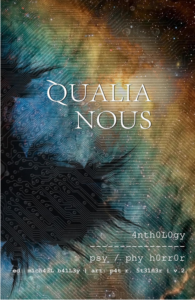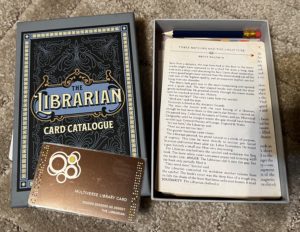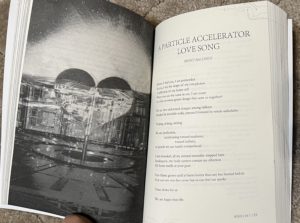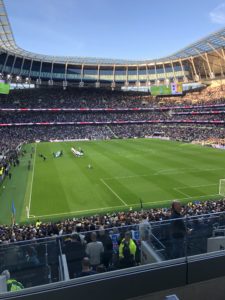Hello, friends! After many years of talking about it, procrastinating, and intensive research, “The Tourist’s Guide to London Football Soccer” is finally here. (Amazon link, B&N link, Kobo link) Or ready for pre-order, depending on when you read this. To whet your appetite, this is the chapter for visiting Tottenham Hotspur.
Tottenham Hotspur
Background
The North London Derby means more in Tottenham. The rivalry is deep on both sides, extending back to 1913 when that Johnny-come-lately Woolwich Arsenal club moved north of the river, but it means more for Tottenham because of the stolen promotion. After World War I, when football resumed, Tottenham were in the second tier, along with Arsenal and Chelsea. Tottenham did not finish in the automatic promotion places, but the plan was for four teams to move into the top-flight. Despite finishing ahead of Arsenal, a backroom deal by Arsenal’s then-chairman saw Arsenal steal Tottenham’s place in the top-flight. Spurs supporters felt positively robbed. Even with a speedy promotion back to the top-flight in the ensuing season, Spurs supporters have never forgotten and never forgiven.
Since the football club’s founding in 1882, Tottenham Hotspur has resided in broadly the same area in north London. Waves of immigrants have moved to the area over the decades, including a number of Jewish families in the early 20th century. For most of the club’s history, the supporters were drawn from the community around the club, not a global audience, and by the 1930s there was a sizeable number of Jewish supporters in the ground on match days. The proportion has diminished over time, but the connection between Spurs and the Jewish community has remained, including having three chairmen in the last 40 years who were Jewish.
Many supporters today still proudly identify as “Yids,” regardless of their personal Jewish heritage. This is a topic of hot debate among the supporters and the community, with the club asking supporters to move on from a term that came to be seen as anti-Semitic in the 1930s. Seldom a matchday passes without a portion of the crowd defiantly singing about “being a Yid.” I’m not here to be your Mom and tell you what you should or shouldn’t sing, but if you’ve not heard the term “Yid” before, consider that there’s a lot more to the word than some drunk lads singing about their football club.
Honors and Trophies
Under the stewardship of chairman Daniel Levy, the club has built a top-class training ground, a world-class stadium, and established itself in the “Big 6” of English football clubs, alongside Arsenal, Chelsea, Liverpool, Manchester City, and Manchester United. (Newcastle supporters are tapping on the glass and mouthing “unlock the door.”) For most of that tenure—and decades prior—Spurs have been the banter club of English football. In the spring of 2025, they ended a 41-year wait for a European trophy by winning the Europa League final and then promptly sacked their manager.
Spurs were top-flight champions in 1951 and 1961, eight-time FA Cup winners (including the first “double” in the 20th century with the league and FA Cup victories under club legend Bill Nicholson’s management), thrice winners of the UEFA Cup (now the Europa League), and four-time winners of the League Cup, most recently in 2008. For most of the 21st century, the defining characteristic of supporting Tottenham Hotspur was the feeling of glimpsing glory but not quite achieving it, but that ended when manager Ange Postecoglu delivered on a promise early in the 2024-2025 season that “I always win trophies in my second season.” And so he did, mate. (And was sacked for finishing 17th in the league.)
Style of play
Tottenham supporters have a distinct vision for the style of play they want to see from the club, exemplified by the club motto: audere est facere. To dare is to do. Attack, attack, attack some more. Sitting in a low block is anathema. Sterile possession is abhorred. The goal is always to be on the front foot, always pressing, always scoring. In recent years the spells under Mauricio Pochettino and Ange Postecoglu exemplified the approach (the winning run in the 2024-2025 Europa League not withstanding). This has not always been the managerial philosophy, particularly in the early 2020s when the club was managed by Portuguese and Italian managers known for their pragmatism and defensive structure. Spurs supporters love an audacious attack, and you’ll seldom see the stadium more raucous than when a player drives forward from their own half to press a counterattack into the opposition’s final third. The 2020 FIFA Puskas Award winner for best goal in the world for the year was exactly this with Son Heung-min dribbling pretty much the entire Burnley team and scoring with a gem of a finish.
The Stadium
The Tottenham Hotspur Stadium is one of the foremost palaces of modern football. It is sleek, modern, convenient, and a money printing machine. Between regular football matches, hosting NFL games, hosting concerts, and boasting Europe’s longest continuous bar—the Goal Line Bar under the south stand—it is a testament to chairman Daniel Levy’s vision for the club to compete off the pitch in order to compete on the pitch.
When visiting the stadium, any first-timer should take the Victoria Line to Seven Sisters Station. From there walk with the crowd northward along Tottenham High Street. You’ll pass local shops and restaurants, and the Tottenham War Memorial on Tottenham Green, until the stadium rises over the shops and flats.

The stadium rising in the distance. Photo taken by the author.
Take a moment to enjoy the view, but get walking soon because it’s still a hike to reach the enormous club shop and the gates into the stadium entrances.

The Seven Sisters walk. Map via Umap and OpenStreetMap.
For visitors who are unable to walk the mile+ from Seven Sisters to the stadium, use National Rail to White Hart Lane station. You can hop on at Liverpool Street, which is easy to access via the tube. Once at White Hart Lane station, it’s a short walk eastward to reach the stadium. Don’t miss the mural on Whitehall Street on the north-facing side of the Brown Eagle restaurant.
Area Pubs and Restaurants
No guide to food in Tottenham is complete without mentioning local stalwart Chick King. It’s been a matchday staple for over four decades, and in recent years received broader exposure, including from the streaming show “Chicken Shop Date.” While you’re very welcome to take your own date, be aware that there will be a queue on match days and that seating will be limited (which really means “as likely as a defensive-minded Italian manager finding enduring happiness.”)

The Tottenham Hotspur Stadium local area. Map via Umap and OpenStreetMap.
For pubs, there are multiple options on the high street. The intrepid visitor might try a pint at each. For character, Bluecoats is worth a visit. If you’re in more of a rush, there are often takeaway drinks at The High Cross along the way to the stadium. The Corner Pin next to the stadium is also a good shout, though the stadium itself boasts a brewery and plenty of bars, including the aforementioned Goal Line Bar.
My personal recommendation is to make the walk up the high road, grab a takeaway drink outside The High Cross, and head straight into the stadium for another pint at the Beavertown microbrewery, tucked away to the right of the Goal Line Bar. The Neck Oil session IPA is the traditional option. The stadium food is pretty good—for stadium food—with a surprising number of options. The chips (fries) are genuinely excellent. Do note that you’ll have to enter through your assigned gate, but as long as you’re not in the away supporters’ section, you can make your way to beneath the south stand and the widest range of food options.
Songs and Chants
Tottenham supporters, like every group of supporters in Europe, have a repertoire of terrace songs. The classic—and easiest for a new supporter—is simply to join in for a few rounds of “Come on you Spurs.”
The next most common song is probably When the Spurs Go Marching In. It’s sung to the tune of—no surprise here—When the Saints Go Marching In. Since 2023, the club has featured a trumpeter before matches to accompany the crowd, and belting the song with 62,000 of your best mates is a spine-tingling experience.
Oh when the Spurs go marching in
Oh when the Spurs go marching in
I want to be in that numba
When the Spurs go marching in
Many players will have a song of their own, and Tottenham supporters—like every club in England—sing One of Our Own for players who came up through the academy.
One of our own
He’s one of our own
[Player name]
He’s one of our own
After the Europa League win, I would be remiss to not mention Brennan Johnson’s song:
Johnson again
Ole, ole, ole
Johnson again, Johnson again, Johnson again
Ole, ole, ole
As mentioned in the background section, the club has endured controversy in recent years from the supporters’ use of the word “yid.” Any match day fan will hear sections of the crowd singing about “being a Yid” and shouting “yiddo” at the club’s players. This is—from personal observation—done in support of a player, nearly always after they have performed well on the pitch. Again, if you are not personally familiar with the word, do consider how you use it.
Tickets
Like most Premier League clubs, Tottenham gatekeeps tickets for league matches. There are various routes to purchasing them, depending on the visitor’s price sensitivity and involvement with the club.
The simplest and most expensive option is to buy “hospitality” tickets directly from the club. They will cost anywhere from hundreds to thousands of pounds, depending on the package and the opponent. They do come with a meal, a box seat, and special access to club representatives.
Another option for engaged supporters is to purchase through their local supporters’ group. This may be in your non-London city or country. The official supporters’ groups usually have access to multiple tickets per season.
The next simplest option is to register (and pay) to be an official One Hotspur member via the club website. Each person attending the match will need a membership, but tickets can be bought four to six weeks before kickoff. This approach is not 100% foolproof. Matches for Arsenal are going to sell out, pretty much guaranteed. Matches against a freshly promoted team are very likely to be easy to purchase. The rest fall in the middle, and it will somewhat depend on the team’s form at the time—everyone likes to watch a winner. I’ve seen more Spurs matches than any club in London, and the only time I struggled to get a ticket was against Arsenal. Even Champions League tickets (vs Bayern Munich in 2019) were readily available via the ticket exchange.
If you feel up to it, I recommend sitting in the south stand where the season ticket holders tend to congregate. It has the best atmosphere in the ground. The away supporters will be in the northeast corner of the ground, and I’d personally avoid sitting in the sections either side of them. If you go more towards the middle of the north stand or about a third of the way into the east stand, it will be fine.

The view from the south stand. Photo taken by the author.
The club ticketing website is available here: https://www.eticketing.co.uk/tottenhamhotspur/

QR code to the Tottenham Hotspur ticketing website
Post-game
The stadium remains open for an hour after the final whistle. The cynical might think it is a ploy by ownership to extract a few more pounds from match day supporters, but is undeniable that there will be lengthy queues for the trains for a while after the match ends. If you must leave immediately, the walk to Tottenham Hale station is of similar distance as the one to Seven Sisters, but it has the advantage of letting you into the train a stop earlier, which means you might have a place to sit rather than being jammed in like an insurance broker after a day at the office.

The winding path to Tottenham Hale Station. Map via Umap and OpenStreetMap.
The queue will be long, but it moves rapidly. If you do walk to Tottenham Hale, GPS is advised. The walk is safe (this is London, after all), but it requires a winding path through residential areas. There are usually other supporters to follow. I would personally go this way on a weekend afternoon, but probably go to Seven Sisters if it’s late on a weeknight. (More out of concern about getting lost in the dark than about safety.)

QR code for the path to Tottenham Hale Station
If you have a few minutes to stick around the stadium, it’s a perfect time to slip down to the Goal Line Bar and get a drink or a photo. It’s also common, especially after a weekend victory, to see people crowding around the stairwell and singing the club songs.
Food options for a sit-down meal are somewhat limited around the stadium. Burgers and chicken, plus a few smaller local restaurants. If you are already heading south toward central London, consider hopping off the Victoria Line at Highbury & Islington and walking to Wolkite for excellent Ethiopian food, continuing on to Kings Cross and the short walk to local Indian hotspot Dishoom, or even continuing on to Warren Street and walking to Mestizo for outstanding Mexican food.
###
If you enjoyed this excerpt, the full book is available on all major ebook publishing sites, including Amazon, Barnes & Noble, Kobo, and more. It includes all the London football clubs from the Premier League, Championship, League One, and League Two, plus bonus sections for Wembley, Twickenham, and Lord’s Cricket Ground. Each section includes the history of the club, how to get to the ground, where to have a pint, and little factoids about the areas that I learned during my years in London. The book also lists all my favorite London restaurants (and what to order), favorite museums (and what to see), and even has a guided tour of a perfect date day at Kew Gardens and along Richmond Riverfront.
Cheers,
Brent






